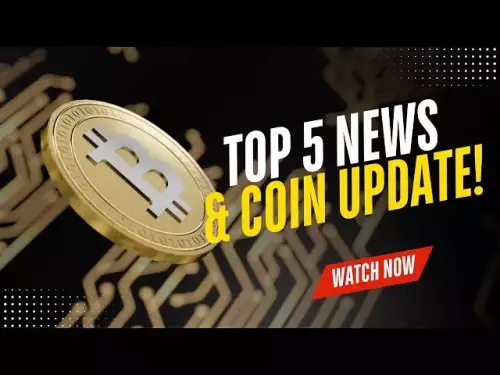-
 Bitcoin
Bitcoin $113800
2.35% -
 Ethereum
Ethereum $4332
1.12% -
 XRP
XRP $2.979
0.84% -
 Tether USDt
Tether USDt $1.000
0.01% -
 BNB
BNB $891.2
1.87% -
 Solana
Solana $222.0
3.09% -
 USDC
USDC $0.9998
-0.02% -
 Dogecoin
Dogecoin $0.2413
0.31% -
 TRON
TRON $0.3386
1.26% -
 Cardano
Cardano $0.8791
2.20% -
 Hyperliquid
Hyperliquid $54.65
2.86% -
 Chainlink
Chainlink $23.38
1.64% -
 Ethena USDe
Ethena USDe $1.001
0.00% -
 Sui
Sui $3.576
3.44% -
 Avalanche
Avalanche $28.64
10.90% -
 Stellar
Stellar $0.3805
2.28% -
 Bitcoin Cash
Bitcoin Cash $581.3
0.24% -
 Hedera
Hedera $0.2316
1.99% -
 UNUS SED LEO
UNUS SED LEO $9.558
0.08% -
 Litecoin
Litecoin $115.5
3.18% -
 Cronos
Cronos $0.2579
-0.86% -
 Toncoin
Toncoin $3.132
1.44% -
 Shiba Inu
Shiba Inu $0.00001294
1.09% -
 Polkadot
Polkadot $4.180
2.16% -
 Uniswap
Uniswap $9.639
2.15% -
 Ethena
Ethena $0.7804
-4.26% -
 Dai
Dai $0.9999
0.01% -
 Monero
Monero $267.6
-0.14% -
 World Liberty Financial
World Liberty Financial $0.1990
0.46% -
 Mantle
Mantle $1.472
11.83%
How to sell crypto on Bitstamp for cash
Sell crypto on Bitstamp by logging in, navigating to Trade, selecting Sell, confirming the order, and withdrawing fiat to your verified bank account after completion.
Sep 11, 2025 at 08:00 am
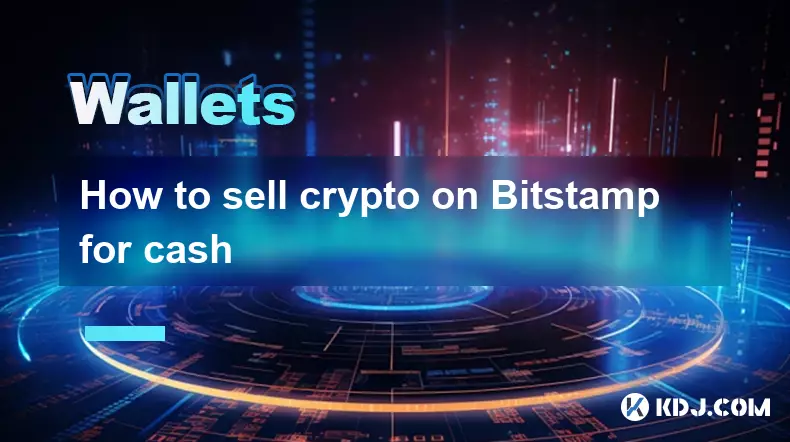
Selling Cryptocurrency on Bitstamp: A Step-by-Step Guide
1. Log in to your Bitstamp account using your registered email and password. If you have two-factor authentication enabled, enter the verification code sent to your device to proceed securely.
2. Navigate to the “Trade” section located in the main menu. Select the cryptocurrency you wish to sell—for example, Bitcoin (BTC), Ethereum (ETH), or another supported digital asset.
3. Choose the “Sell” option from the trading interface. Enter the amount of crypto you want to convert into fiat currency, typically EUR or USD depending on your account settings.
4. Review the current market price and estimated transaction fees. Confirm the details before submitting the sell order. You can opt for a market order to execute immediately or a limit order to set a specific price target.
5. Once the sale is executed, the equivalent fiat amount will be credited to your Bitstamp wallet. Ensure that your account has sufficient balance and the transaction history reflects the completed trade.
Withdrawing Fiat Funds to Your Bank Account
1. After successfully selling your cryptocurrency, go to the “Withdrawal” tab under the “Account” section. Select the fiat currency you received from the sale—usually USD or EUR.
2. Choose your verified bank account as the destination for the withdrawal. Make sure the account is pre-verified through previous deposits or document submission to avoid processing delays.
3. Enter the amount you wish to transfer from your Bitstamp balance to your bank. Be aware of minimum withdrawal thresholds and any associated bank fees imposed by Bitstamp or your financial institution.
4. Confirm the withdrawal request using two-factor authentication. The funds typically take 1–5 business days to appear in your bank account, depending on your region and banking network.
5. Monitor your email and Bitstamp dashboard for confirmation messages regarding the status of your withdrawal. Keep records of transaction IDs for future reference or dispute resolution.
Fees and Processing Times on Bitstamp
1. Bitstamp charges a trading fee for each buy or sell order, usually ranging from 0.1% to 0.2%, depending on your 30-day trading volume. Higher volumes may qualify for reduced rates.
2. Withdrawal fees vary by currency. For instance, withdrawing EUR via SEPA incurs no charge, while USD wire transfers may cost $15 per transaction. Always check the latest fee schedule on the platform.
3. Trading executions occur instantly with market orders during active market hours. Limit orders may take longer if the specified price hasn't been reached.
4. Bank withdrawals are not processed instantly. SEPA transfers generally complete within 1–2 business days, whereas international wires can take up to 5 days.
5. Delays may occur due to system maintenance, high traffic, or additional identity verification requirements triggered by large transactions.
Tax and Security Considerations
1. Every sale of cryptocurrency is a taxable event in many jurisdictions. Maintain detailed records of transaction dates, amounts, prices, and fees to support accurate tax reporting.
2. Enable all available security features on Bitstamp, including two-factor authentication (2FA), withdrawal address whitelisting, and login alerts to prevent unauthorized access.
3. Avoid accessing your account over public Wi-Fi networks. Use a secure, private internet connection and ensure your devices are protected with updated antivirus software.
4. Never share your login credentials or recovery codes with anyone. Phishing attempts often mimic official emails, so always verify URLs and contact support directly if unsure.
5. Regularly download your transaction history and export trade reports from Bitstamp’s dashboard for auditing purposes and long-term financial planning.
Frequently Asked Questions
Can I sell cryptocurrency on Bitstamp without verifying my identity?No, full KYC verification is required to sell crypto and withdraw fiat funds. Unverified accounts have limited functionality and cannot process withdrawals.
What happens if I enter the wrong bank account for withdrawal?Bitstamp only allows withdrawals to pre-verified bank accounts. You cannot change the destination after setup unless you go through a new verification process for a different account.
Are there daily limits on how much I can sell or withdraw?Yes, Bitstamp enforces daily and monthly limits based on your verification level. Higher tiers allow larger transaction volumes and require additional documentation.
Does Bitstamp support cash withdrawals through ATMs or physical locations?No, Bitstamp does not offer ATM access or physical cash redemption. All fiat withdrawals are processed through bank transfers only.
Disclaimer:info@kdj.com
The information provided is not trading advice. kdj.com does not assume any responsibility for any investments made based on the information provided in this article. Cryptocurrencies are highly volatile and it is highly recommended that you invest with caution after thorough research!
If you believe that the content used on this website infringes your copyright, please contact us immediately (info@kdj.com) and we will delete it promptly.
- Solana, SUI, and the Hunt for the Next Big Thing: Price Predictions and Beyond
- 2025-09-11 10:45:16
- Layer Brett: The Meme Coin Primed for September Crypto Boom?
- 2025-09-11 12:05:12
- Kaito Crypto's Pullback: How to Avoid Risk Amidst Launchpad Momentum
- 2025-09-11 10:25:11
- Crypto Watch: Layer Brett Steals September Spotlight!
- 2025-09-11 10:25:11
- ZA Miner: Your Safe Harbor for Crypto Income in 2025
- 2025-09-11 08:25:12
- XRP Price, Ethereum, Analyst Expectation: Decoding the Crypto Crystal Ball
- 2025-09-11 10:45:16
Related knowledge

How to transfer funds from Binance to your Exodus wallet?
Sep 10,2025 at 10:19pm
Connecting Your Binance Account to Exodus Wallet1. Log in to your Binance account and navigate to the 'Wallet' section under the 'Funds' tab. Select '...
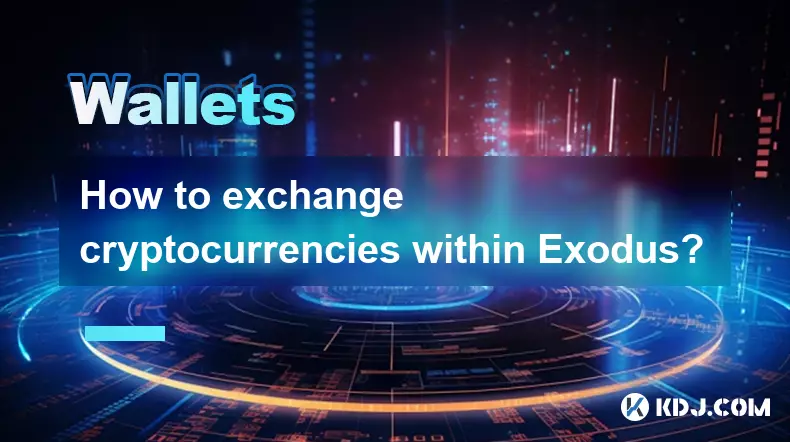
How to exchange cryptocurrencies within Exodus?
Sep 10,2025 at 07:36pm
Accessing the Exchange Feature in Exodus1. Launch the Exodus wallet application on your desktop or mobile device and unlock your wallet using your pas...
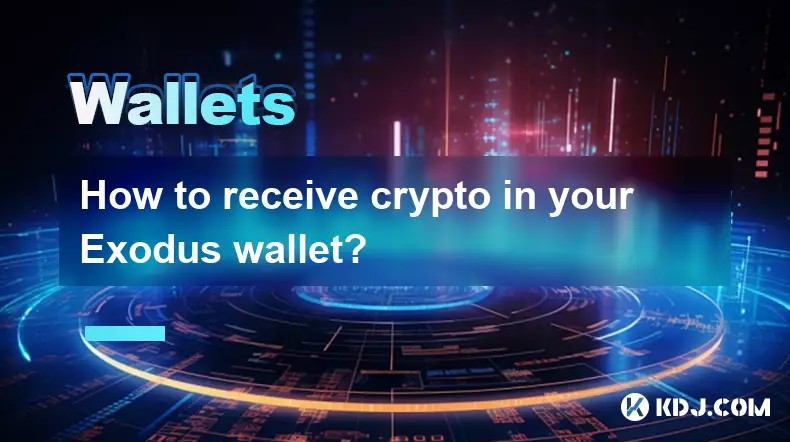
How to receive crypto in your Exodus wallet?
Sep 10,2025 at 01:00pm
Understanding the Basics of Receiving Crypto in Exodus1. Exodus is a user-friendly cryptocurrency wallet that supports a wide range of digital assets....

Trezor Model One vs Model T: Which one should you buy?
Sep 11,2025 at 12:19am
Trezor Model One vs Model T: Key Differences1. The Trezor Model One is a compact, entry-level hardware wallet designed for users who prioritize afford...

How to use the Solana network with your Ledger?
Sep 10,2025 at 10:54pm
Setting Up Your Ledger for Solana1. Ensure your Ledger device is updated to the latest firmware version. Connect it to your computer using the provide...
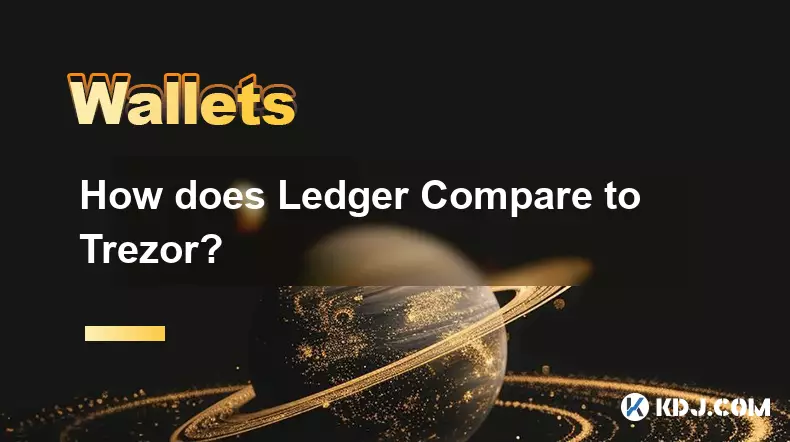
How does Ledger Compare to Trezor?
Sep 10,2025 at 03:18pm
Ledger vs Trezor: Security Architecture1. Ledger utilizes a Secure Element chip, a feature commonly found in banking cards and smartphones, to protect...

How to transfer funds from Binance to your Exodus wallet?
Sep 10,2025 at 10:19pm
Connecting Your Binance Account to Exodus Wallet1. Log in to your Binance account and navigate to the 'Wallet' section under the 'Funds' tab. Select '...

How to exchange cryptocurrencies within Exodus?
Sep 10,2025 at 07:36pm
Accessing the Exchange Feature in Exodus1. Launch the Exodus wallet application on your desktop or mobile device and unlock your wallet using your pas...

How to receive crypto in your Exodus wallet?
Sep 10,2025 at 01:00pm
Understanding the Basics of Receiving Crypto in Exodus1. Exodus is a user-friendly cryptocurrency wallet that supports a wide range of digital assets....

Trezor Model One vs Model T: Which one should you buy?
Sep 11,2025 at 12:19am
Trezor Model One vs Model T: Key Differences1. The Trezor Model One is a compact, entry-level hardware wallet designed for users who prioritize afford...

How to use the Solana network with your Ledger?
Sep 10,2025 at 10:54pm
Setting Up Your Ledger for Solana1. Ensure your Ledger device is updated to the latest firmware version. Connect it to your computer using the provide...

How does Ledger Compare to Trezor?
Sep 10,2025 at 03:18pm
Ledger vs Trezor: Security Architecture1. Ledger utilizes a Secure Element chip, a feature commonly found in banking cards and smartphones, to protect...
See all articles

























